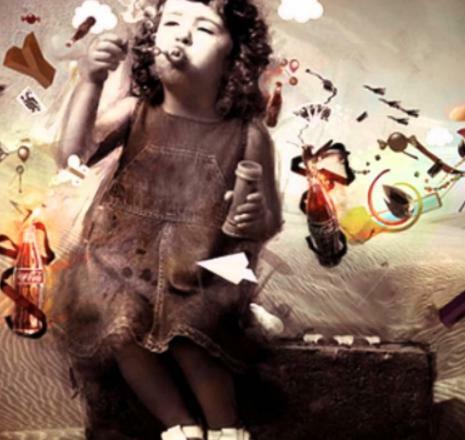
Attitude: way of adaptationactive from the person to her environment. The attitude: result of cognitive, affective and behavioral processes. People constantly use the term "attitude" to refer to things like the state of mind that a person usually expresses or how they take things. The definition of attitude with which social psychology works is the following: "Set of beliefs and feelings that predispose us to behave in a certain way when faced with a certain object". Here we explain how attitudes are formed and created.
Cognitive antecedents A person's assessment of an object depends on what they think about it.
It is the expectation-value theory: The knowledge that the person has acquired in his relationship with the attitudinal object in the past gives him a good estimate of how This object deserves to be evaluated (information about atitudinal objects is acquired, sometimes, through experience direct).
Fishbein and Ajzen formulate their THEORY OF REASONED ACTION starting from the theory of the concepts of expectation-value. It consists of two fundamental parts:
- In the first it is postulated that the attitude towards an object is the result of the beliefs that the person holds towards said object.
To verify this, they investigated the attitude towards the use of contraceptive pills:
- Initially, a list of beliefs about said use was obtained, which was subsequently reduced, leaving the more "normative" beliefs of the population.
To know what a person thinks about birth control pills, you need to collect two types of information:
- The degree of estimated probability of the belief or subjective probability (between - 3 and + 3). Example: If someone thinks that "it is extremely unlikely that the use of pills will cause serious side effects", the subjective probability of belief number 1 ("causes serious side effects"), it will be -3.
- The degree to which the person believes that the consequences expressed by the belief are positive or negative or subjective desirability (between - 3 and + 3). Example: In the case of belief # 1, most people will find these consequences (serious side effects) very undesirable.
Relationship between subjective probability and subjective desirability:
- In the event that both are high (both + 3), this belief would contribute to a positive attitude (product (+3) x (+3)).
- When one or both values are zero, it means that the person feels indecisive.
That belief does not constitute an attitude. According to Fishbein and Ajzen:
- Not all normative beliefs influence attitude determination in all cases.
- There is a set of salient beliefs for each person (between 7 and 10) that are the really operative ones.
The empirical proof that the attitude is the result of the beliefs that the person holds in relation to the attitudinal object requires the prior completion of these steps:
- Determination of normative beliefs.
- Selection of those that are outgoing for each person.
- Calculation of the subjective probability and desirability of each salient belief.
- Calculation of the probability x desirability products.
- Weighted algebraic sum of these products.
Not all attitudes arise in the way described and proposed by Fishbein and Ajzen (it would be equivalent to accepting that people have rational control of all their feelings and emotions). Stroebe, Lenkert and Jonas conducted research in Germany to show that attitudes can be modified without appreciably altering their cognitive content.
Classical conditioning and instrumental conditioning Attitudes are conceived as results of previous learning, supposedly regulated by the same processes that are operative in all types of learning. A different question is why attitudes that are the product of conditioning have an affective antecedent. The answer is twofold: Social psychologists have drawn primarily from conditioning theories that emphasize reinforcement. They have tended to assume that conditioning tends to happen automatically.
Latest Research:
- Mental representations also take place in conditioning and deliberative cognitive processes are involved.
- Studies on Classical Conditioning: Staats, Staats and Crawford. His neutral stimuli were words of everyday language ("long"). As EI they used aversive stimuli (very loud noises).
After repeated association, the initially neutral words were rated by the people on a 7-point scale. Three interesting results appeared in this study:
- Participants rated initially neutral words more negatively than the control group. Words associated with the aversive E elicited greater physiological activation than control words.
- There was a close relationship between the intensity with which the words were evaluated and the intensity of psychogalvanic R.
Two further investigations:
- Zanna, Kiesler and Pilkanis: The negative emotion generated by the conditioning also extended to synonyms of the words used. The attitudinal effect had an effect even in cases where the context and the experimenter were different.
- Cacioppo, Marshall-Goodell, Tasinary, and Petty: The effects of conditioning are strongest with words without sense ("tasmer") that with words of everyday language (before conditioning both were neutral). Studies on instrumental conditioning: The type of reinforcement used is usually "social" (verbal or paraverbal behaviors that indicate approval and that are of a positive nature). This reinforcement becomes contingent on the presentation of certain statements selected in advance by the experimenter.
- Outcome: It is possible to modify the emission of attitudinal statements. Insko's experiment: An experimenter, while having a telephone conversation with a person, gradually modified his attitudinal statements. The process that mediates between reinforcement and attitude modification has been the subject of strong debate in Social Psychology. Effect of mere exposure The person ends up developing a positive attitude towards the object that has been presented to him on numerous occasions. Matlin's experiment (Turkish words). Zajonc. Used 3 different stimuli: Turkish words. Chinese characters. Photographs of a calendar that represented a man. Outcome: The frequency of exposure was directly proportional to the evaluation of the object in question. The "mere exposure" is a sufficient but not necessary condition for the intensification of the attitude to take place.
The effect of mere exposure, occurred even when the stimuli were not recognized by people: Doubts about the assumption that recognition of the stimulus is a condition previous. Moreland and Zajonc:
Mere exposure can influence attitudes through: A cognitive or cold route. When there is recognition of the object. A hot, non-cognitive route. Recognition is absent and its place is occupied by "subjective affect". Bornstein.
He conducted a meta-analysis of 200 experiments and showed that the effect of mere exposure is easily replicable. produced in a multitude of different contexts, with a wide variety of stimuli and with very high exposure frequencies. different.
This effect is accentuated in the absence of recognition, when its perception is subliminal. Recent research has shown that there is a wide range of cognitive and perceptual processes that can occur without the need for awareness on the part of the person. Kruglanski, Freund and Bar-Tal: conducted studies to demonstrate the "affinity" of the effect of "mere exposure" with other "stimulatory" effects that occur in the absence of consciousness.
When a certain stimulus is presented to the person in a mere exposure experiment, it evokes some hypotheses in relation to it. The subsequent repetition of the presentation of the stimulus to the person increases the tendency of the person to accept the initial hypothesis as the basis for evaluating the stimulus.
If this explanation is correct, an easily verifiable forecast can be made: Those factors that are known for sure that positively or negatively affect the use of hypotheses or plausible clues, will also affect the effect of mere exposition. From these factors they choose two: Time pressure (perform a task in a limited time).
Apprehension of evaluation (avoid any error of judgment). The authors' prognosis is that the effects of mere exposure should increase with time pressure, while they should diminish with apprehension of evaluation. In conclusion, it has been traditional in attitude research to consider the effect of mere exposure as an affective antecedent of attitudes.
Behavioral antecedents Behavior can also be a source of attitudes. The training techniques: A very intense repetition of certain behaviors will end up implanting these in the behavioral repertoire of the trainees without any resistance from them. The most cited systematic empirical evidence for a long time was the so-called "brainwashing technique" (used by the Chinese with American prisoners of the Korean War with the aim of securing a prisoner's compromise with the authorities of the prison). Although the impact of these techniques has been exaggerated, even Perloff ("brainwashing mythology") does not deny their existence.
More recently, Fazio studies: Those attitudes that are formed on the basis of direct experience with the object They are better learned from attitude, are more stable and are more closely related to behavior than those that arise through an indirect and mediated experience.
It is not so much the direct experience but the accessibility Of attitude, what is really decisive, although direct experience is one of the determinants of accessibility. The theory of cognitive dissonance: Under certain conditions, the performance of certain behaviors produces important and permanent attitudinal changes.
This article is merely informative, in Psychology-Online we do not have the power to make a diagnosis or recommend a treatment. We invite you to go to a psychologist to treat your particular case.


